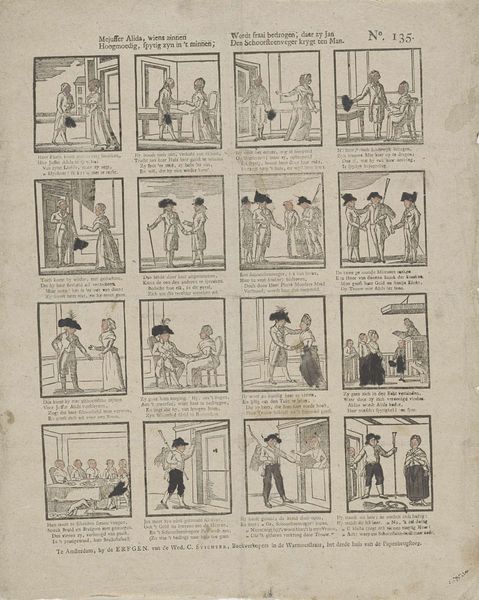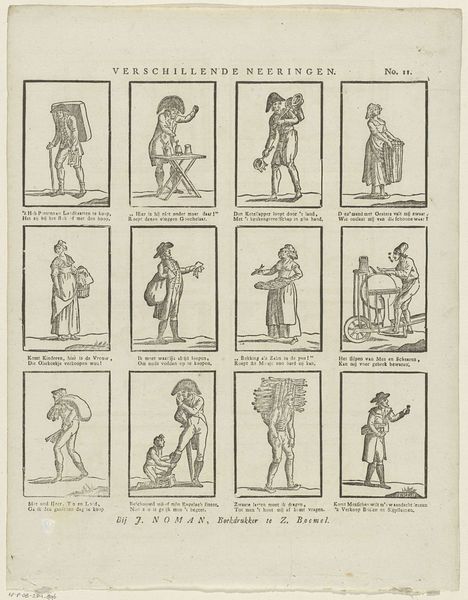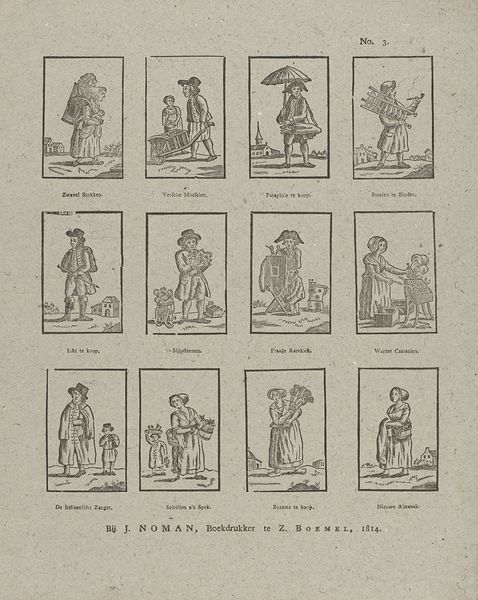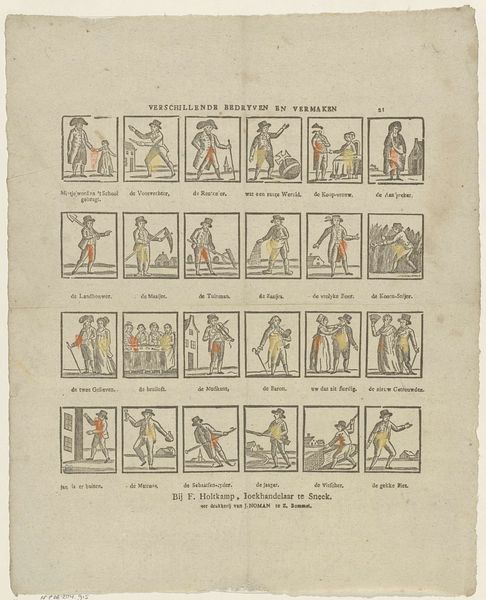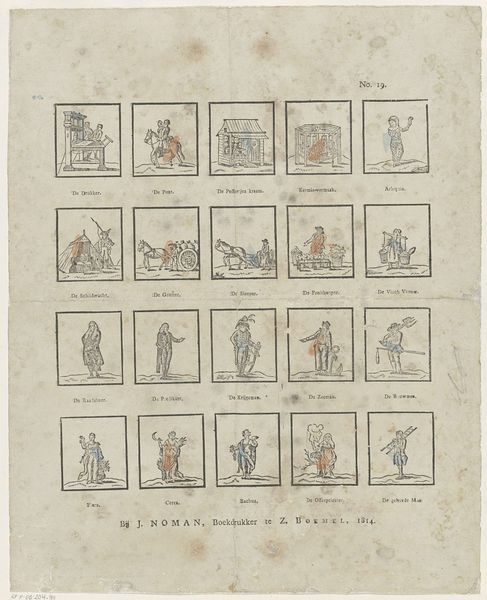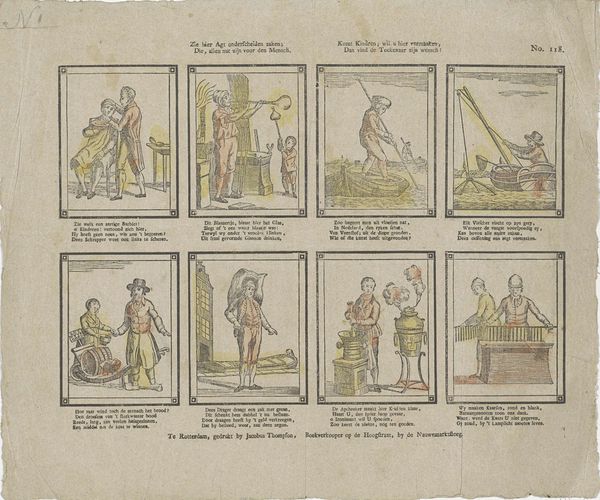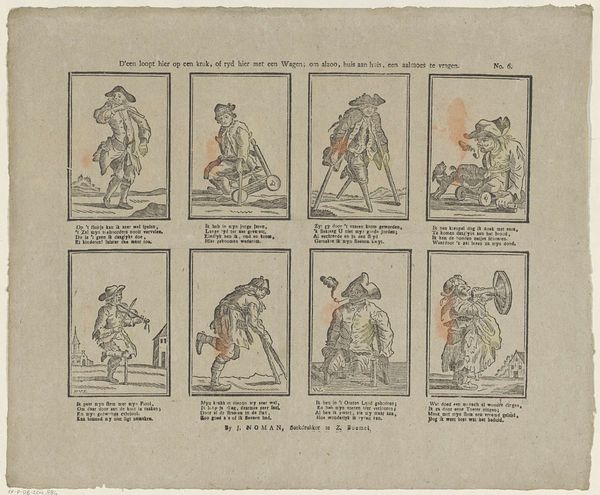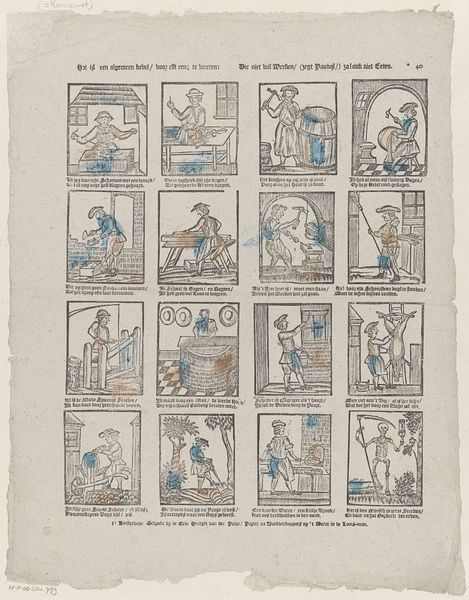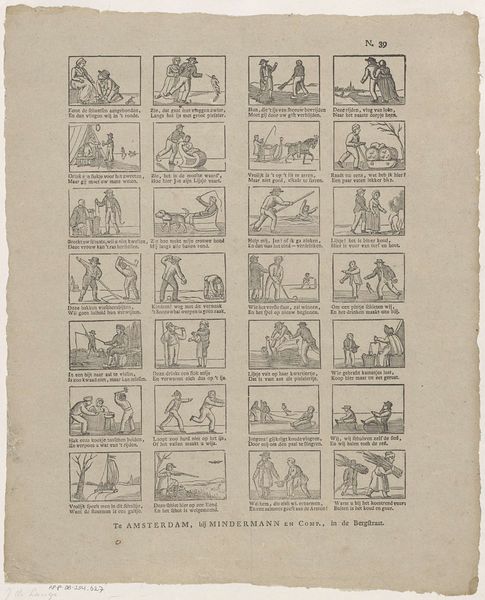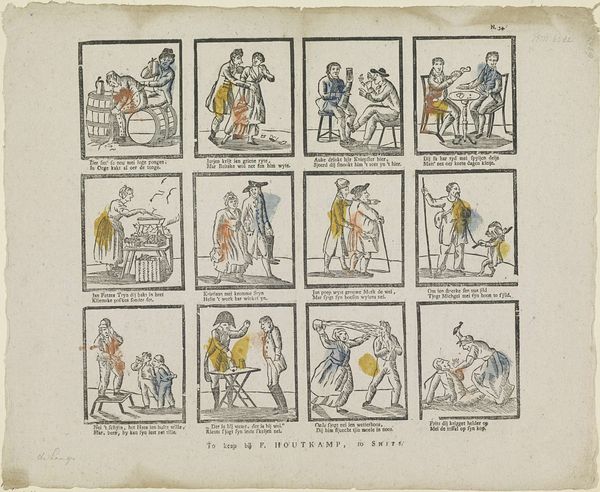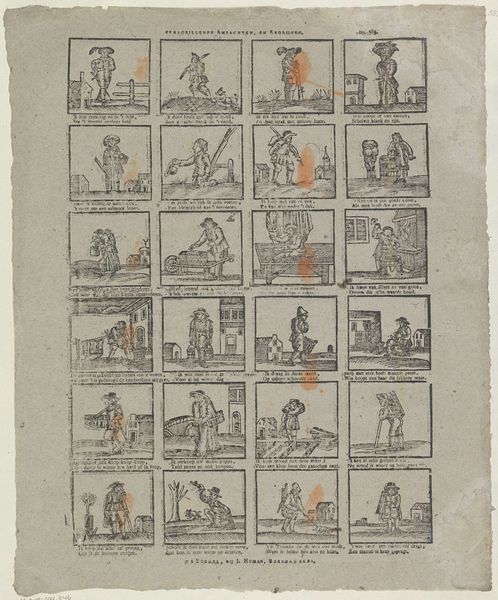
Aanschouw hoe ieder hier zijn waren weet te pryzen, / Maar laat het niet by u, hierdoor in waarde ryzen 1806 - 1830
0:00
0:00
print, engraving
#
comic strip sketch
#
aged paper
#
dutch-golden-age
# print
#
old engraving style
#
sketch book
#
personal sketchbook
#
idea generation sketch
#
sketchwork
#
sketchbook drawing
#
genre-painting
#
storyboard and sketchbook work
#
sketchbook art
#
engraving
Dimensions: height 401 mm, width 335 mm
Copyright: Rijks Museum: Open Domain
Curator: I find this print, titled "Aanschouw hoe ieder hier zijn waren weet te pryzen, / Maar laat het niet by u, hierdoor in waarde ryzen," which roughly translates to something about people knowing how to praise their wares but not letting the praise inflate their worth, absolutely charming. It dates back to sometime between 1806 and 1830. Editor: It gives me a storyboard vibe. The little scenes feel like stills from a long-lost Dutch Golden Age comic strip. The aged paper gives it such a fragile, antique feel. What’s your take? Curator: Absolutely! Each vignette encapsulates a tiny narrative. Look at the figures; they evoke archetypes from Dutch society—merchants, tradespeople, families. These characters carry a symbolic weight, each representing aspects of industry and daily life during that period. Notice how repetitive motifs create a visual rhythm across all twelve panels. Editor: And there's a self-aware commentary, wouldn’t you say? A commentary about appearances and value. "Don't let the praise get to you"—that resonates even now. Did these prints circulate widely then? Curator: Prints like this often had a didactic function, aiming to impart moral or social lessons to a broad audience, shaping public values. Given that it comes from Schalekamp and van de Grampel, bookdealers in Amsterdam, one can assume it circulated fairly easily around town. Editor: So it’s art, propaganda, and maybe even social commentary—a kind of all-in-one package circulating through the streets of Amsterdam! The deceptive simplicity makes it brilliant. What really gets to me is how a sketch can freeze social values for a moment in time, even to this day. Curator: Exactly. These images provide us a looking glass into the social and moral values circulating within the society of the Netherlands in the 19th century. It acts almost like a cultural memory, a testament of an important commercial and cultural moment. Editor: Well, next time I think that "nothing changes", I'll come look at this again to remind myself of social continuity! Thanks for helping me see the world within this tiny piece.
Comments
No comments
Be the first to comment and join the conversation on the ultimate creative platform.
